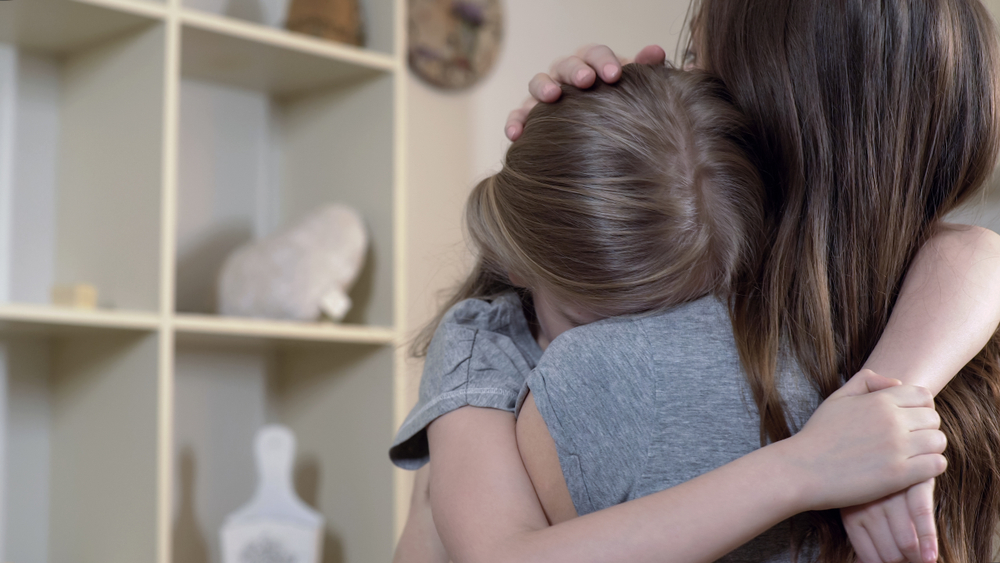Preschoolers 3-4 Years
How can we manage and control Fear and Anxiety in Children?

Written by: Dana Dsoud, I Can Self Development for Kids- Lebanon
Childhood itself is quite an anxious process. Kids are tasked with learning new skills, meeting new challenges, overcoming fears, and navigating a world that doesn’t always make sense. But sometimes these fears or stressors prove too much to handle, and adults’ interference is needed.
I’ll never forget the time a much beloved cousin brought my 2-year-old son a present, a battery-operated airplane with flashing lights that lurched across the room making loud noises.
She thought she’d brought a perfect present for a little boy. But for my son it wasn’t and I don’t know what it meant to him or what signs it sent to his mind and body.
Being a kids and parenting coach something told me I have to turn this experience into a lesson. I gathered my son into my lap for a gentle talk. After a reassuring hug and accepting and acknowledging his feelings, my son was willing to touch the thing. We wrapped it in a blanket to carry around like a baby, making something he feared into something to care for.
Parents often ask me how to handle children’s fears. Some studies show that up to 90 percent of children between the ages of 2-14 develop at least one specific fear for ex: fear of animals, the dark, or imaginary monsters or ghosts being among the top issues. Most of these fears diminish over time. But some are persistent. Some limit a child’s development and opportunities.
We can’t shield our children from everything that may inspire fear. But how a parent reacts to a fear can determine whether a child becomes overly anxious or develops the tools to cope with whatever is making them fearful.
Here are some tips for dealing with children’s fears
1. Deal with your own fears.
An overly fearful parent will create an overly fearful child. If you are terrified of dogs, heights, ghosts, etc., chances are your child will be, too. If you know you have an irrational fear that is limiting you, you owe it to yourself as well as to your child to work on reducing it.
2. Recognize that your child’s fear is real, even if you think it is irrational.
Validate your child’s feelings by acknowledging the fear. This lets him/her know that you are in his/ her corner and that you are going to help him/ her. That alone will bring his/ her anxiety down a little.
3. Emphasize your child’s strengths.
Remind her/him of other things that she/ he used to be afraid of but that she/ he managed. Let her/ him know you think she/ he is strong enough to handle it.
4. Provide reassuring touch.
When a small child’s fears are activated, words alone probably won’t be enough to calm some of them. Gently pull her/him close or take his hand. Physical contact lets the child know that you are offering protection. Your calm presence communicates that whatever is frightening is manageable.
5. Be supportive without going overboard.
A child can only learn to master fears if they are supported in facing them.
6. Gradually reintroduce the feared issue.
Expose the child to whatever she fears in small steps to teach her she can handle it. If she’s afraid of a big dog, for example: Read storybooks together about dogs. Play with a toy dog. Introduce her to a friend’s small, calm dog. Work up to petting a large dog.
7. Do purposefully work on helping your child be a resilient person.
Read books together about kids who master fear. Teach relaxation skills. Encourage her/ him whenever they draw on courage to do things. Help them distinguish between when being afraid tells us to be cautious and when it is just getting in the way of doing something new and exciting.
And to make it easy for you, here is an exercise that will help you overcome your fears as well as your child’s:
First:
Construct a ladder of places or situations that you avoid. At the top of the ladder put those which make you most anxious. At the bottom of the ladder put places or situations you avoid, but which don’t bother you as much. In the middle of the ladder put ones that are in between.
Second:
Give each item a rating from 0-100% according to how anxious you would feel if you had to be in the situation.
Third:
Overcome your anxiety by approaching these situations, starting from the bottom of the ladder.














